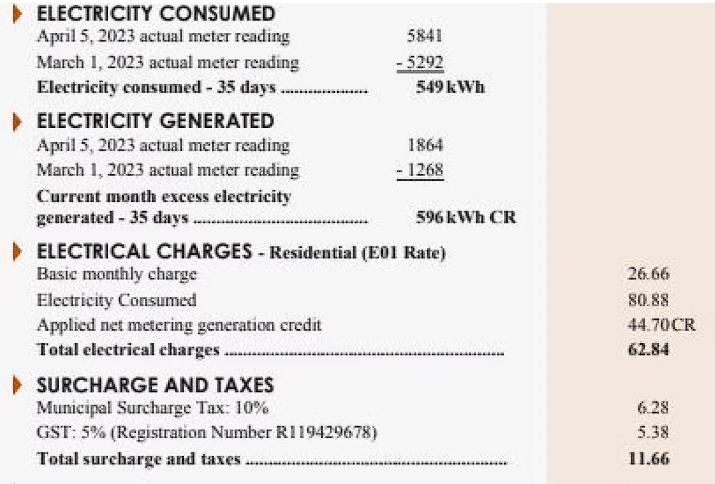Tera Ebach took a step towards reducing her ecological footprint by installing solar panels on her home in Saskatoon. However, she believes that more appealing measures should be implemented by her power provider to encourage others to do the same.
According to an article by the CBC, Ebach is enrolled in SaskPower’s net metering program, which allows customers to generate their own electricity through solar panels and receive credits for any surplus energy supplied to the provincial grid. During the period from March 1 to April 5, she produced more power than she consumed, effectively providing power to the utility company. Surprisingly, she still had to pay $74.50 on her monthly bill.
Ebach’s intention behind installing solar panels was to reduce her expenses by utilizing renewable energy. She suggests that SaskPower should consider options that prioritize doing good for the majority, even if it may not be the most profitable choice.
However, transitioning to solar power came with its own costs for Ebach. After accounting for incentives, she paid $9,000 to have 14 solar panels installed on her roof. Additionally, she had to spend hundreds of dollars to apply for the net-metering program and replace her old meter.
Under the current net-metering program, any surplus energy sent to the grid is credited at a rate of 7.5 cents per kilowatt-hour (kWh), which is about half of what the previous version of the program offered. Ebach acknowledges the need for SaskPower to cover infrastructure costs but believes that the current net-metering rates are unfair.

A screenshot of Tera Ebach’s latest SaskPower bill showcasing that she generated more power than she used. (Submitted by Tera Ebach Credit CBC)
Ebach argues that the existing system fails to encourage participation. She suggests that SaskPower should consider reducing their profit margin from 50 percent to 25 percent or adopting a more comparable rate. This, she believes, would attract more people to participate in the program and contribute to reducing fossil fuel consumption.
When Ebach called SaskPower to voice her concerns about the rates, she received a shocking response from a manager who stated that the company had no interest in making the net metering program appealing because it resulted in financial losses for them.
Nathan Hoffart, SaskPower’s manager of customer solutions, explains that the previous net-metering rates were changed due to their unsustainability and the burden it placed on non-net metering customers. SaskPower must manage its costs and provide value to all customers, including net-metering and non-net-metering customers alike.
SaskPower projected that if they had continued with the previous net-metering rates and the program had continued to grow at the same rate, it would have cost them $54 million by 2025.
Hoffart emphasizes that customers who generate solar power still rely on SaskPower’s infrastructure during periods when there is no sunlight. Offsetting all costs would mean not contributing to the upkeep of the grid, which is still necessary.
While residential solar power contributes to SaskPower’s goal of achieving net-zero emissions, Hoffart states that larger-scale solar facilities are more cost-effective.
It is important to note that Saskatoon has two power providers, depending on the location within the city. Saskatoon Light & Power (SL&P), managed by the city, supplies electricity within the 1958 city boundary, excluding the University of Saskatchewan, which is jointly serviced.
SL&P has a one-to-one net metering program where any excess electricity generated by customers is credited at a 1:1 ratio on their account. This means that surplus power generated in one month can offset bills in another.
Jose Cheruvallath, SL&P’s metering and sustainable energy manager, mentions that the company faces similar sustainability challenges as SaskPower. However, the city council has decided against changing their net metering program to continue incentivizing participation. This decision aligns with the city’s greenhouse gas reduction targets, which aim for net-zero emissions by 2050, with anticipated contributions from net-metering participation.
Cheruvallath highlights the importance of promoting solar panels on rooftops in cities where space for larger-scale solar facilities is limited. The transition to a cleaner electricity grid requires a collaborative effort from the community to achieve success.














Comments